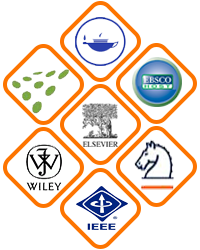کنسرسيوم دانشگاهيان و متخصصان ايران
کنسرسيوم ايرکاس | آموزش مجازي | دوره هاي تخصصي |مدرک معتبر| مدرک بين المللي | دوره هاي حضوري| جامعه مهندسي | جامعه پزشکان | متخصصان ايران
آموزش تعمير تجهيزات پزشکي
آموزش تعمير تجهيزات پزشکي
انجمن مهندسي پزشکي
دوره هاي آموزشي پر درآمد
آموزش بازسي جوش
آموزش پايپينگ
انجمن مهندسي مکانيک
دوره آموزشي تعميرات
آموزش تعميرات تجهيزات دندانپزشکي
آموزش تعمير تجهيزات بيمارستاني
آموزش تعمير تجهيزات تصوير برداري
آموزش مجازي
صدور گواهي نامه بين المللي
دانشجويان مهندسي پزشکي
تعميرات تخصصي
تعمير تجهيزات اتاق عمل
Energy conservation and renewable technologies for buildings to face the impact of the climate change and minimize the use of cooling

Abstract:
Facing the climate change is a common priority, due to ethical issues related to general concept of sus-tainability and livable future for the next generations. Moreover, ethical aims for contrasting energy pov-erty, heat-related diseases and deaths, availability of food and water, infections and viral-bacteriological risks, meteorological extreme phenomena, such as floods and intense and destructive precipitations, are stringent and pressing targets. All serious and independent investigations reveal future scenarios of an overall global warming that surely make worrying the evolution of quality of life on this earth. Each one has to do his part. In this study, the research is focused on renewable technologies for the passive cooling of buildings. Indeed, the space cooling is a strongly increasing use of energy and induces a vicious circle, being, at the same time, a cause and an effect of the anthropogenic overheating of the planet. The paper mainly reviews techniques for suitably governing the energy interaction between buildings and surrounding environment. The energy efficiency concerns the building envelope design, the use of effi-cient HVAC systems, adoption of renewable energy on-site. On the other hand, every energy conversion process determines waste heat, so that also a ‘free of operational cost’ solar cooling system however causes dissipation of heat into the ambient. Finally, renewables cannot be the unique solutions for sup-plying the energy required for the building use. Conversely, strategies for reducing the building cooling are needed, and these are reviewed in this study. In thermodynamics terms, the building is seen as part of the system and not the mere control volume. Greenery of facades and roofs, phase change materials, noc-turnal convective cooling, evaporative and ground cooling, solar systems such as chimneys for improving the building ventilation are here discussed, as well as emerging technologies such as breathing walls and dynamic insulation. The reviewed studies, selected on the basis of more recent progresses concerning the investigated technologies, revealed potentialities but also criticalities in the design.
Authors:
Fabrizio Ascione
Keywords:
Heat protection
Building and environment interaction Renewable building technologies Green roofs
Green walls
Phase change materials
Night cooling
Evaporative cooling
Solar chimneys
Stack effects
Ground cooling
Dynamic thermal insulation
دپارتمان های علمی
درباره کنسرسیوم
پنل آموزشی
آمار سایت
مراکز خدماتی و رفاهی طرف قرارداد





















